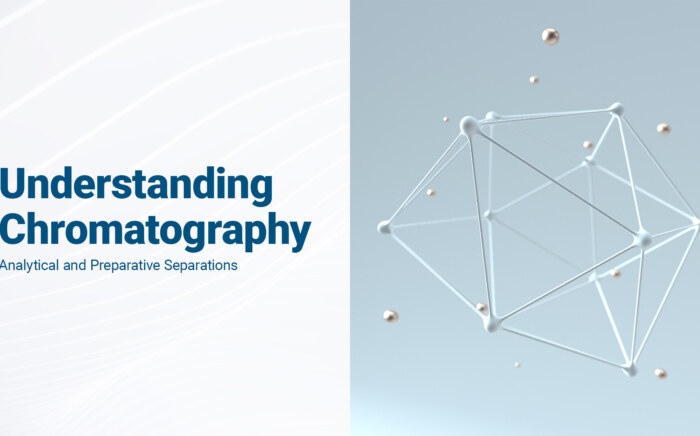Increasing separation efficiency by pH adjustment in Centrifugal Partition Chromatography
NewsNatural Extract History
Throughout history, medicinal plants and crops have held a special place in human health practices. Their documented and recognized positive effects on well-being predate modern medicine and continue to coexist with it, often serving as a preferred mode of treatment. Companies dedicated to plant-based products, derived from conventional mass-volume procedures like ethanolic or supercritical extraction, typically yield broad-spectrum products that have served as medicinal aids or nutritional supplements for centuries.
Natural extracts, utilized as therapeutic agents, often result in standardized therapeutic extracts due to the limitations of traditional extraction methods. The inherent lack of selectivity in these methods leads to extracts containing a wide range of active constituents. This phenomenon, known as synergism, where various compounds enhance each other’s effects, can be advantageous. Nevertheless, instances of antagonism or counterproductive outcomes might occur if these compounds are not properly separated.
Hence, the necessity for resolving power beyond the scope of extraction methods is evident, especially for components with potentially adverse effects. Chromatography emerges as the recommended technique to achieve this, particularly when the value of the final remediated component justifies extending the downstream process.
In industries primarily relying on extraction, downstream efforts are seldom utilized. However, current trends, especially in pharmaceutical crops and nutraceuticals, emphasize the importance of isolation using chromatography as an essential step towards obtaining clean isolates. Isolating individual compounds often leads to the creation of high-value materials that can be further processed into Active Pharmaceutical Ingredients (APIs) or serve as intermediates for valuable targets. Furthermore, the preference for isolates or fractionated constituents from natural extracts is growing even in environments that were previously dominated by synthetics.
Natural Extract Purification With Chromatography
RotaChrom, with its innovative centrifugal partition chromatography (CPC) technology, presents an economically prudent solution for natural extract isolation, fractionation, and remediation needs. The versatility and adaptability of this technology cater effectively to the realm of natural extracts, aligning with the evolving demands of the industry.
RotaChrom, with its innovative centrifugal partition chromatography (CPC) technology, presents an economically prudent solution for isolation, fractionation, and remediation needs. The versatility and adaptability of this technology cater effectively to the realm of natural extracts, aligning with the evolving demands of the industry.
The significance of medicinal plants and crops has endured throughout history. Their documented and recognized positive effects on health existed long before modern medicine emerged, and even today, they continue to coexist harmoniously, often being the preferred approach to treatment.
Companies that emphasize plant-based products, achieved through commonly used procedures like ethanolic or supercritical extraction, typically yield products with a broad spectrum of effects. These products have served their purpose as medicines or dietary supplements for centuries.
Despite the time-tested efficacy of these natural extract products used as therapeutic agents, traditional extraction methods often lack the precision required to isolate specific molecules effectively. Consequently, these products frequently reach end-users in the form of standardized therapeutic extracts, encompassing a wide range of active constituents.
The concept of synergism, where compounds within an extract enhance each other’s effects, is often attributed to the presence of a diverse array of constituents. However, it’s important to acknowledge that this broad spectrum can sometimes lead to instances of antagonism or unintended outcomes if the compounds are not adequately separated.
For components that might yield negative effects, the ability to separate them effectively becomes paramount. Chromatography emerges as a potent solution, particularly when the value of the final purified component justifies extending the downstream process.
The practice of delving beyond mere natural extract extraction efforts is relatively uncommon in this industry. Yet, current trends, particularly within pharmaceutical crops and nutraceuticals, underscore the necessity of chromatography-based isolation to produce pristine isolates. This practice of isolating individual compounds often yields high-value materials that can be further processed into APIs or serve as intermediates for more advanced targets.
Moreover, a shift is being observed where isolates or fractionated constituents obtained from natural extracts are gaining preference, even in environments previously dominated by synthetic products. In this landscape, RotaChrom and its innovative centrifugal partition chromatography (CPC) technology emerge as champions, offering cost-effective solutions for isolation, fractionation, and remediation. This unique technology’s remarkable adaptability and versatility make it exceptionally suited to address the challenges and demands posed by natural extracts.
Further Resources
To learn more about natural extracts, CPC and chromatography in general, click any of the links below.



